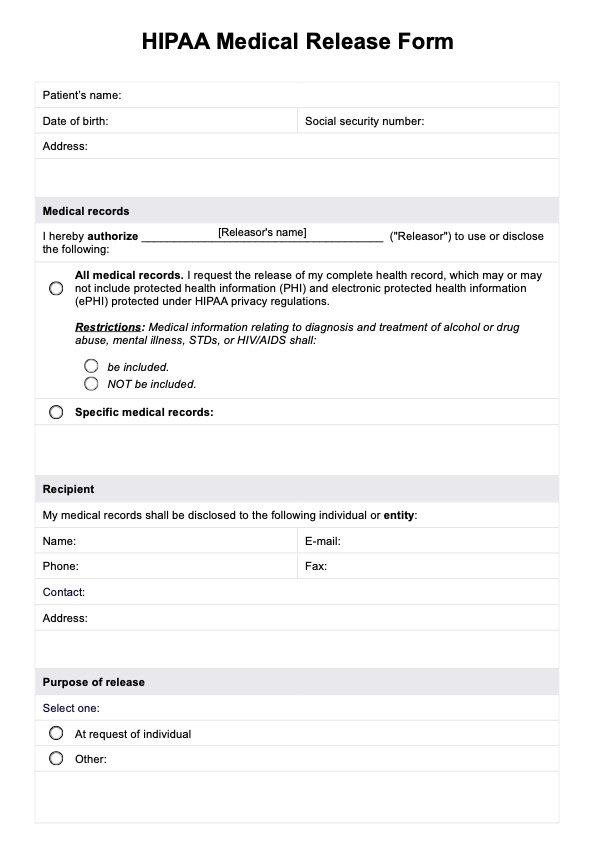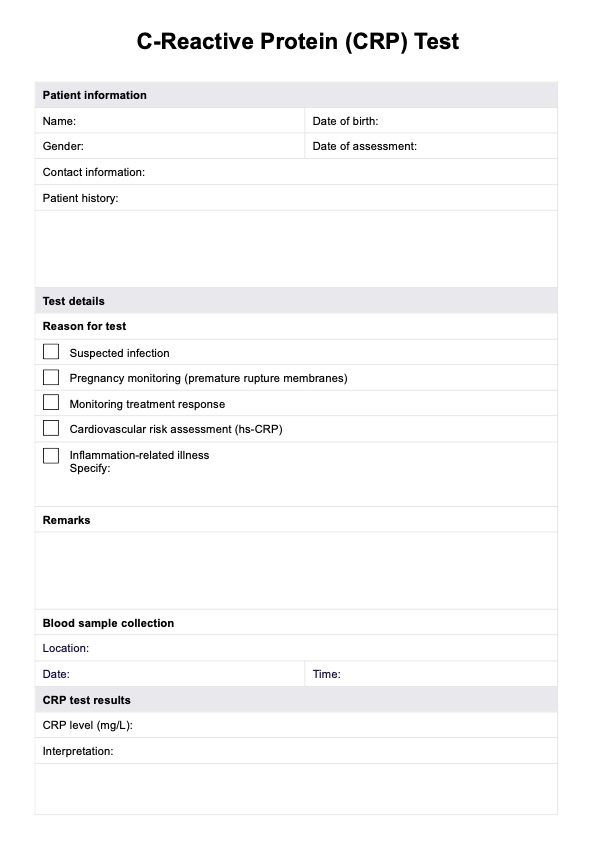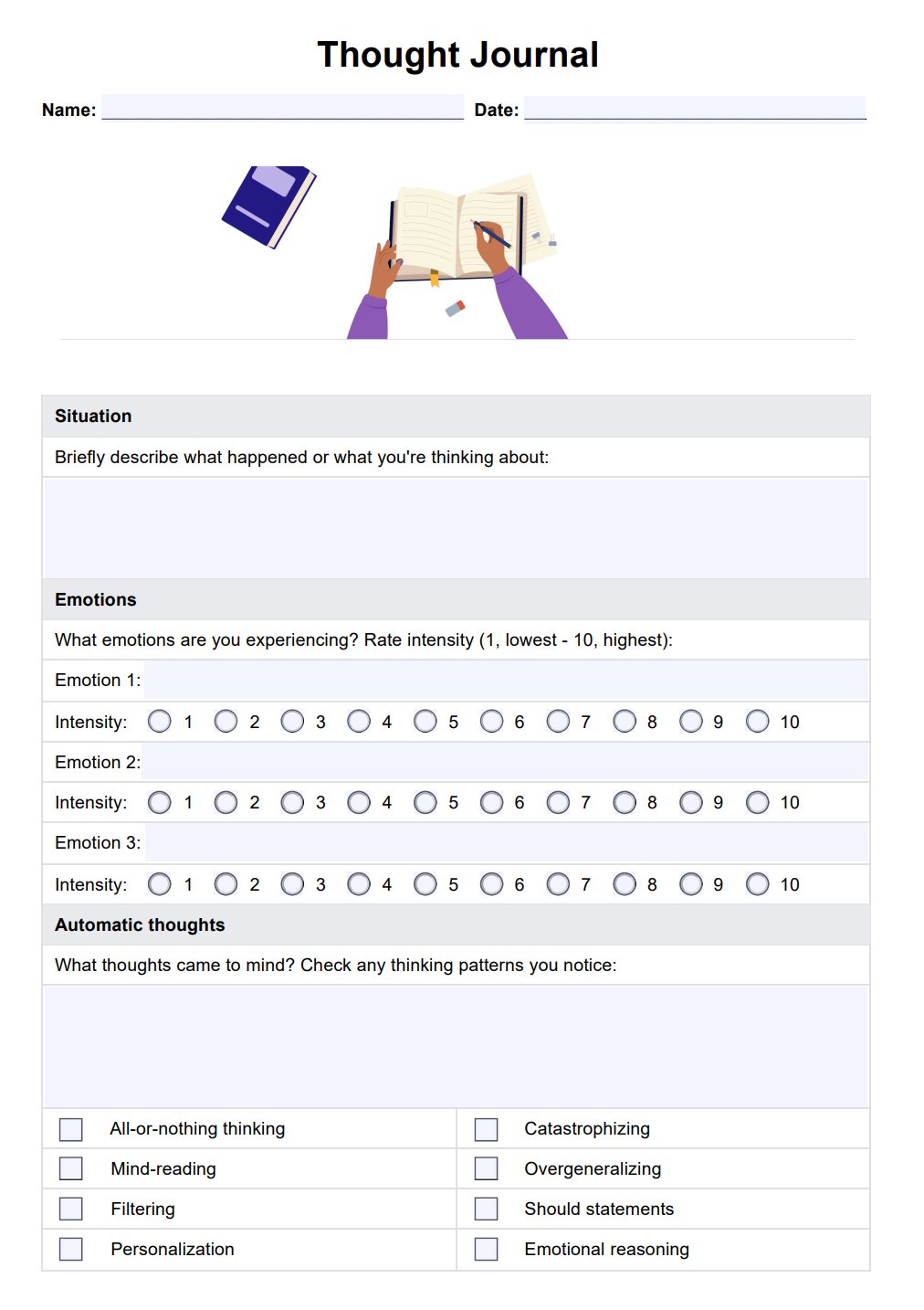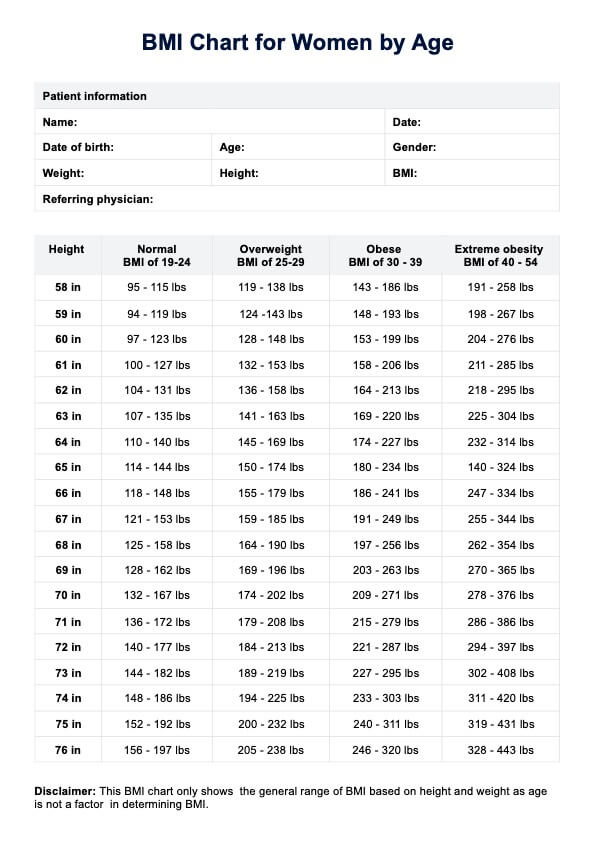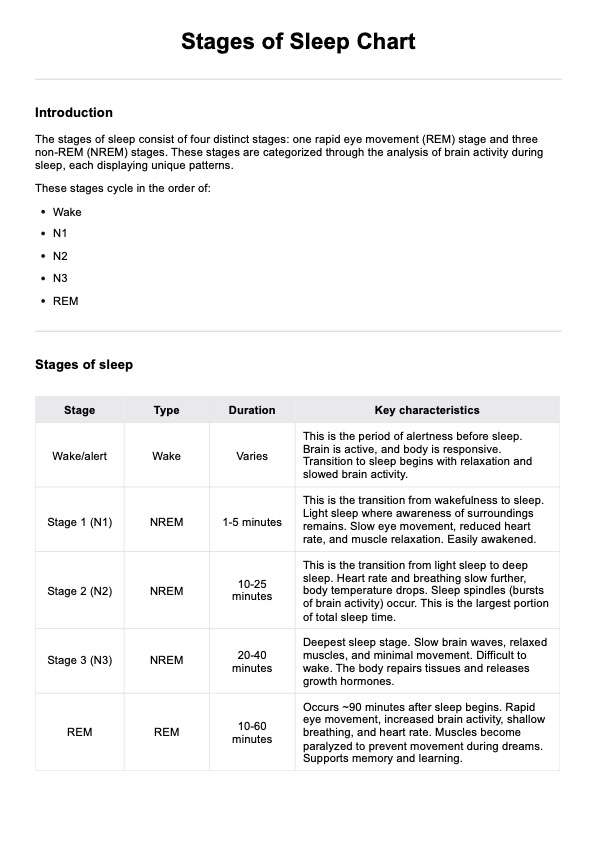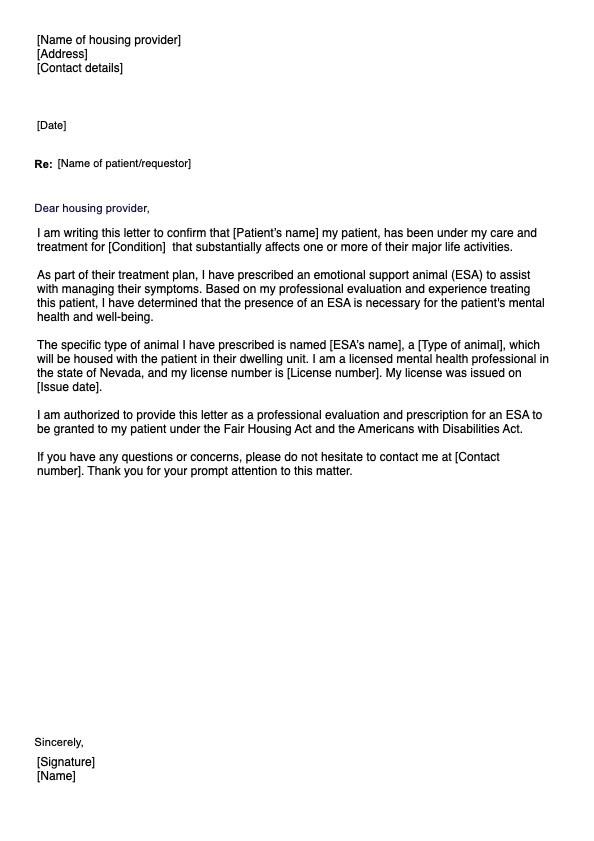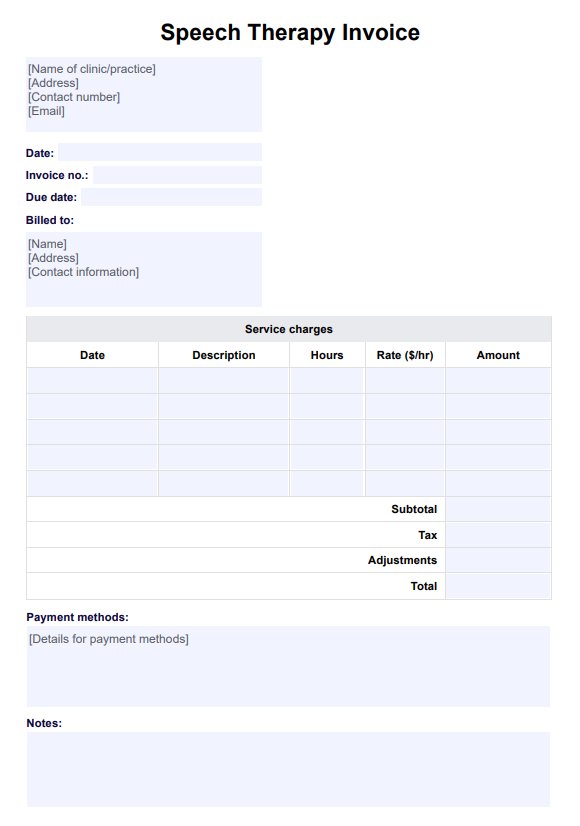Un Signo de Retraso de la Rotación Externa positivo indica que el paciente no puede mantener el hombro en posición de rotación externa.
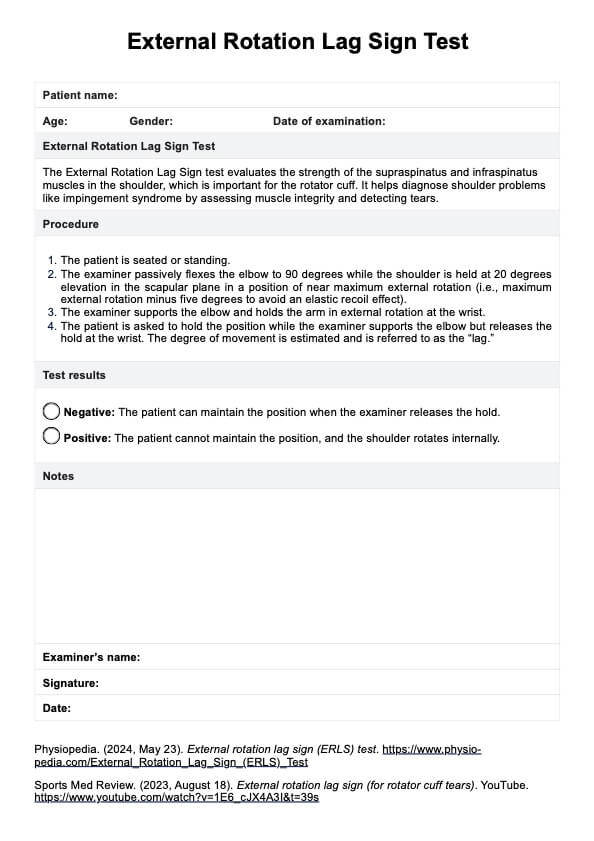
Prueba de signo de retraso de rotación externa para manguito rotador
Aprenda a realizar y puntuar la prueba del signo de retraso de la rotación externa para las roturas del manguito de los rotadores.
Use Template
Prueba de signo de retraso de rotación externa para manguito rotador Template
Commonly asked questions
Las opciones de tratamiento para las roturas del manguito de los rotadores incluyen el tratamiento no quirúrgico (terapia física, reposo, inyecciones de esteroides) y, si es necesario, la reparación quirúrgica.
Un acondicionamiento adecuado, ejercicios de fortalecimiento y evitar actividades excesivas por encima de la cabeza pueden prevenir las roturas del manguito de los rotadores en los atletas.
EHR and practice management software
Get started for free
*No credit card required
Free
$0/usd
Unlimited clients
Telehealth
1GB of storage
Client portal text
Automated billing and online payments


